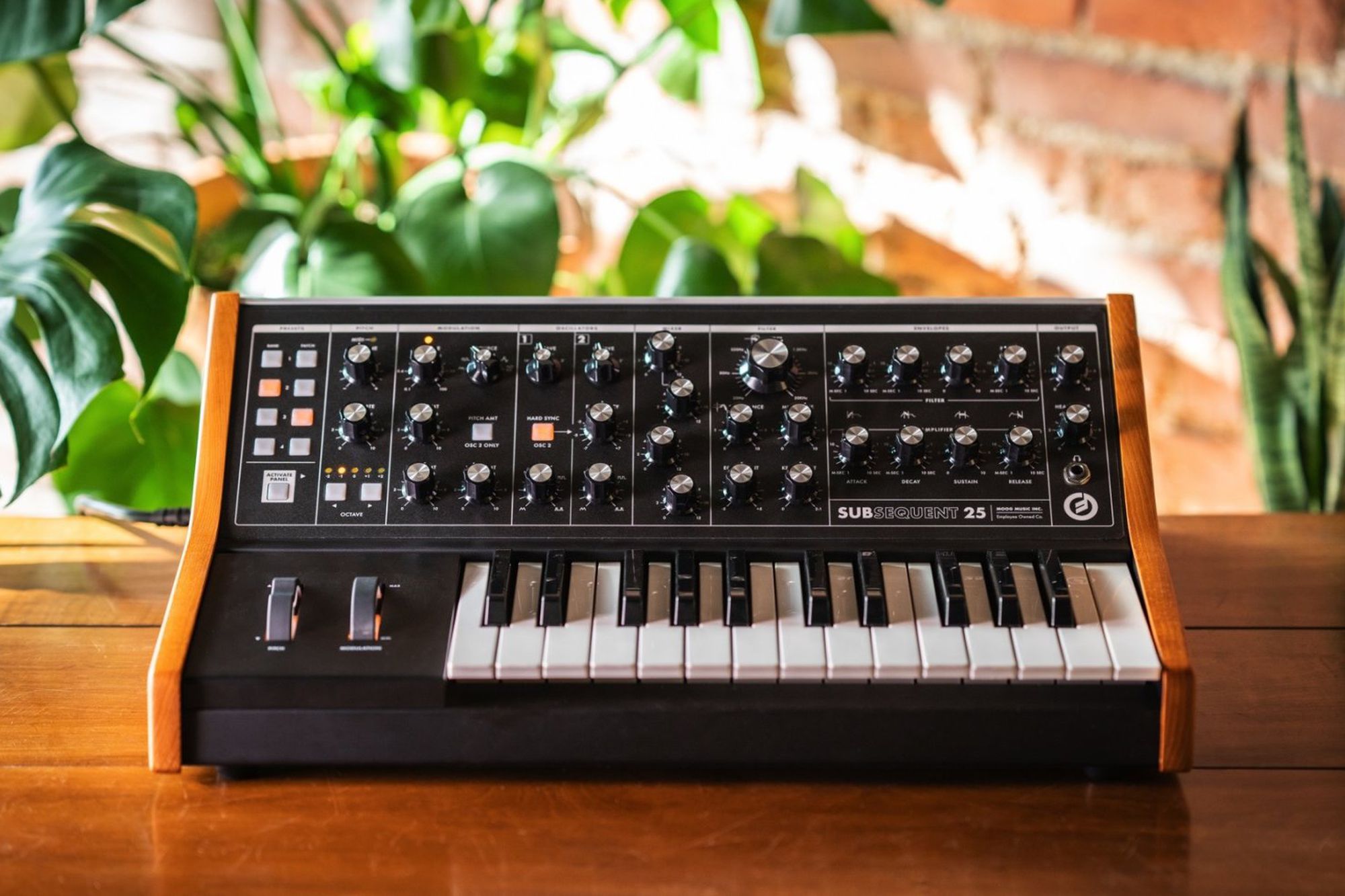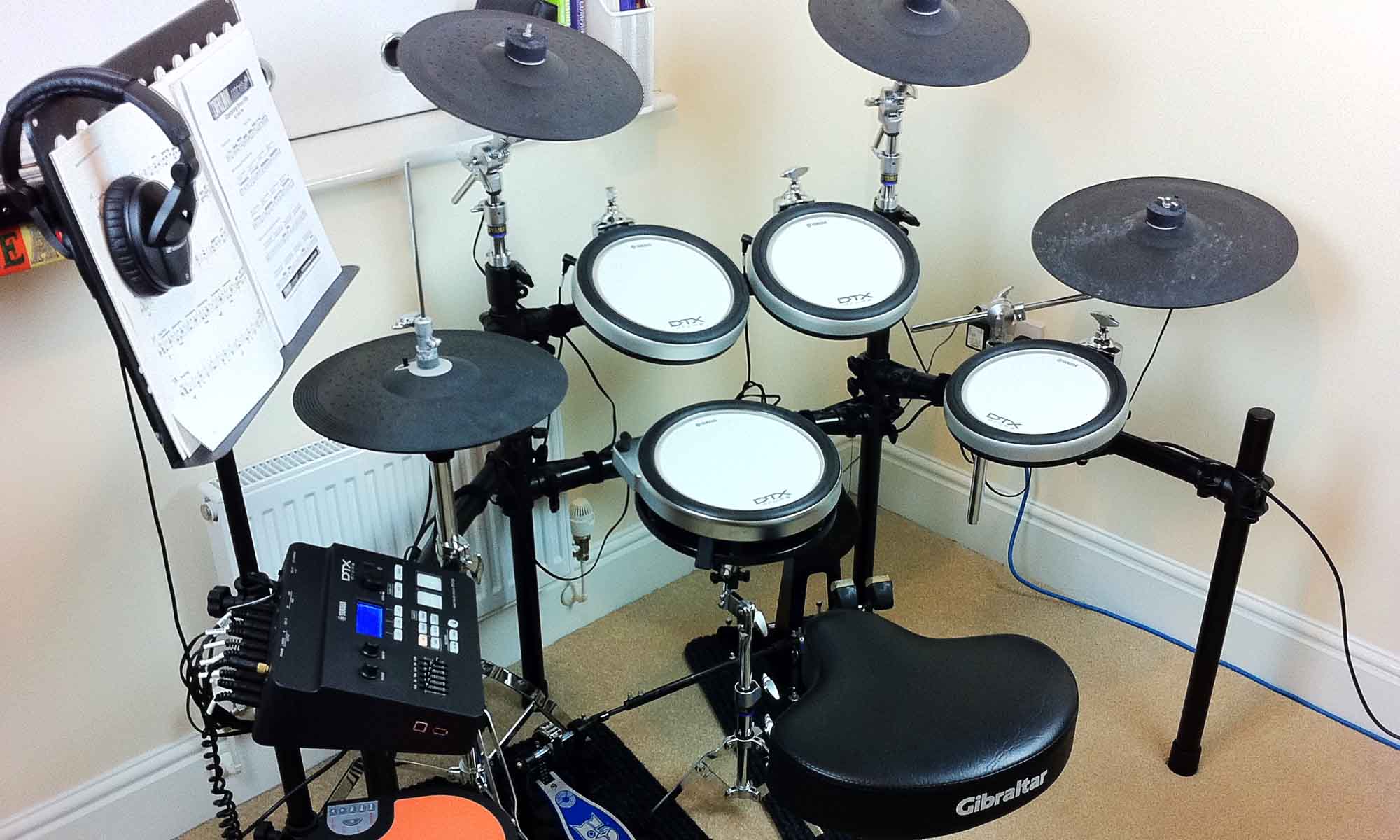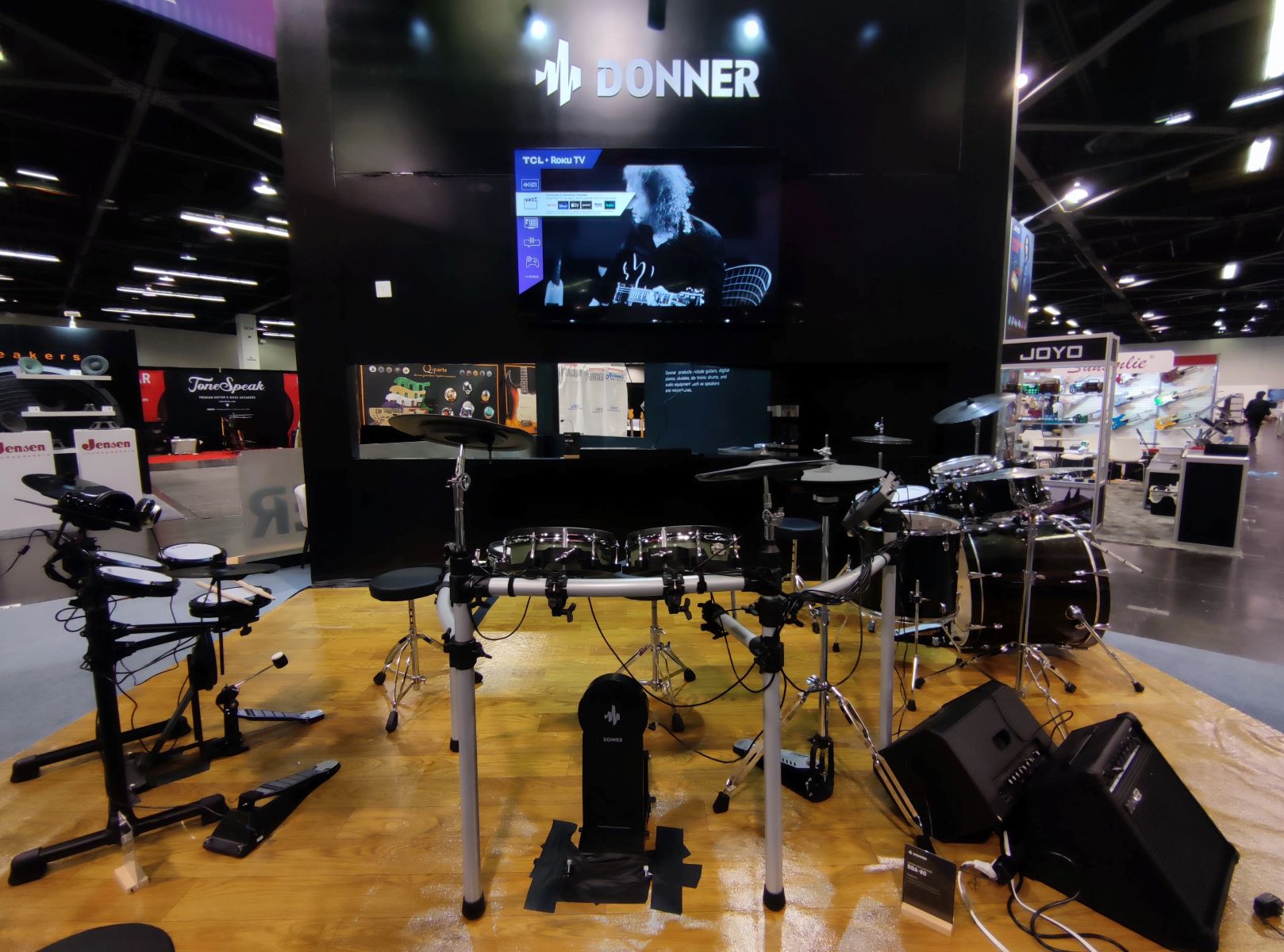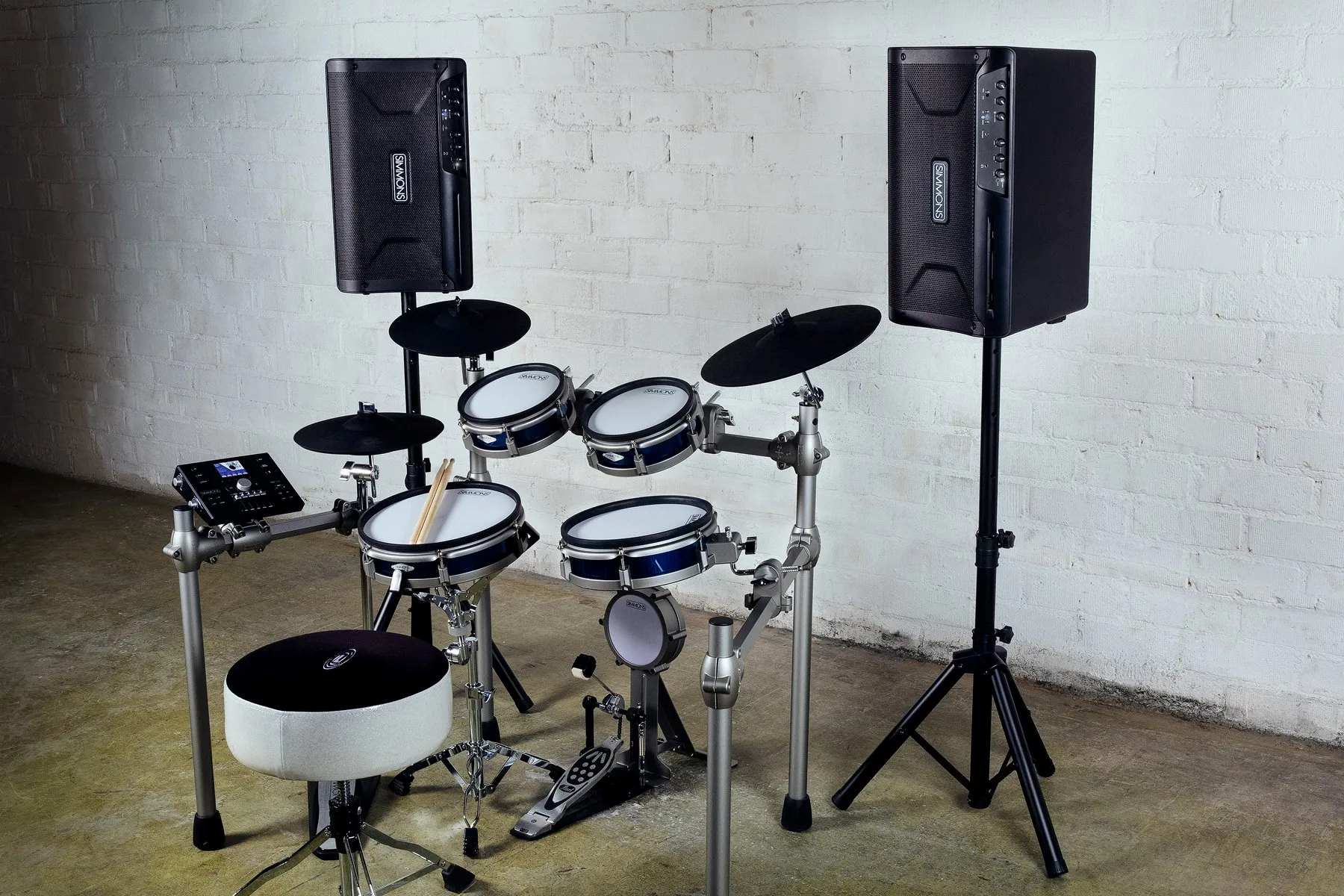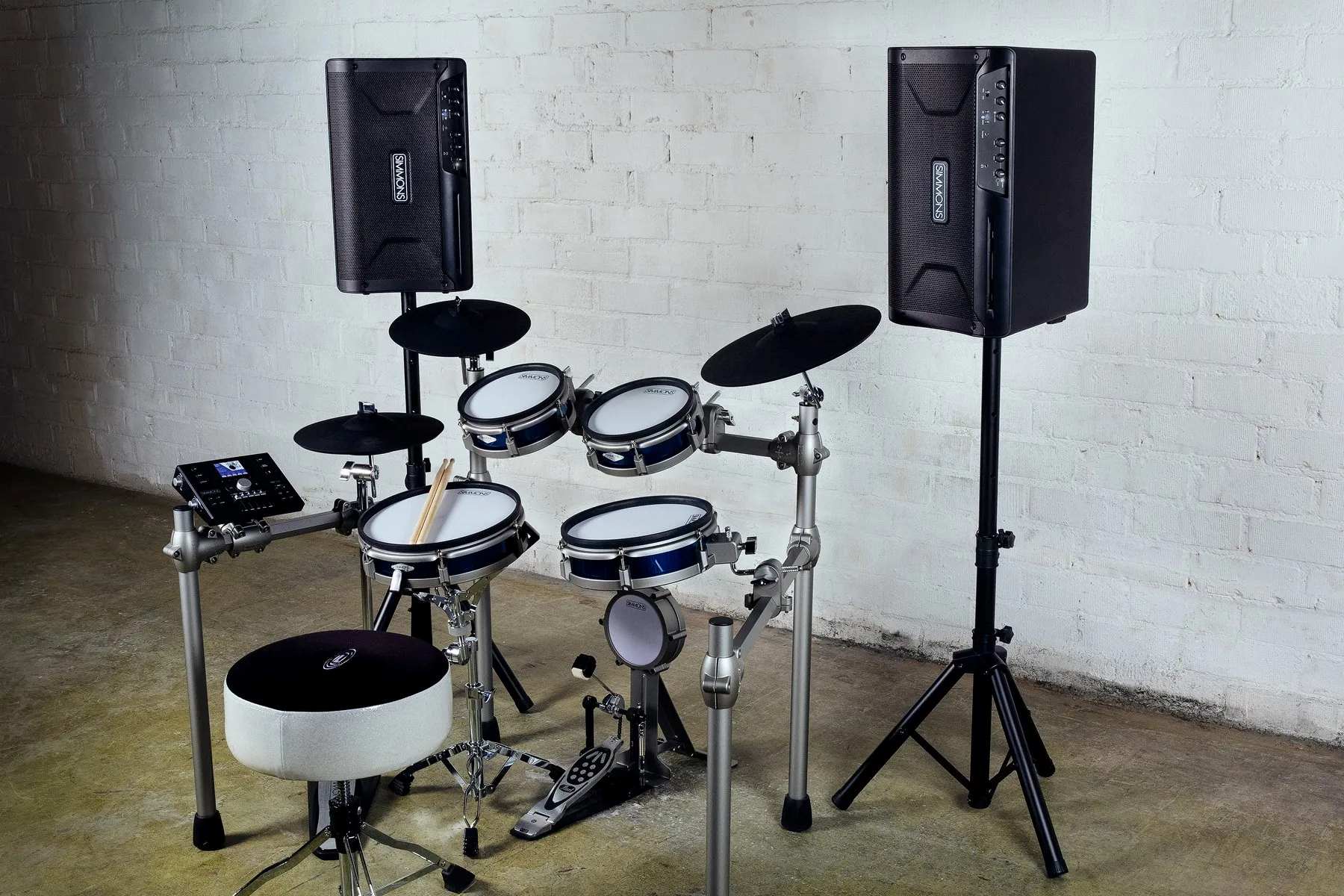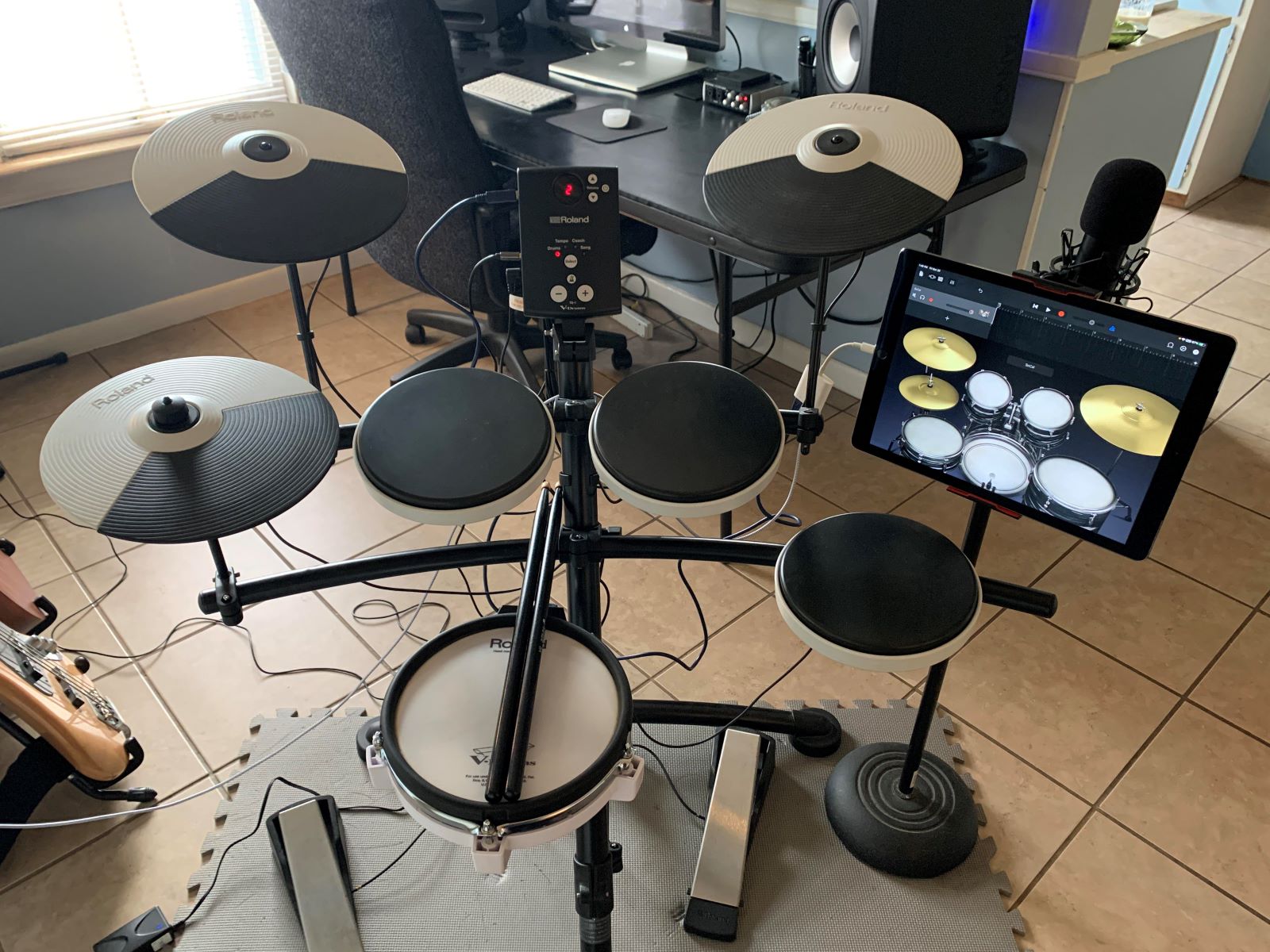Home>Instruments>Drums>When Were Electronic Drums Invented
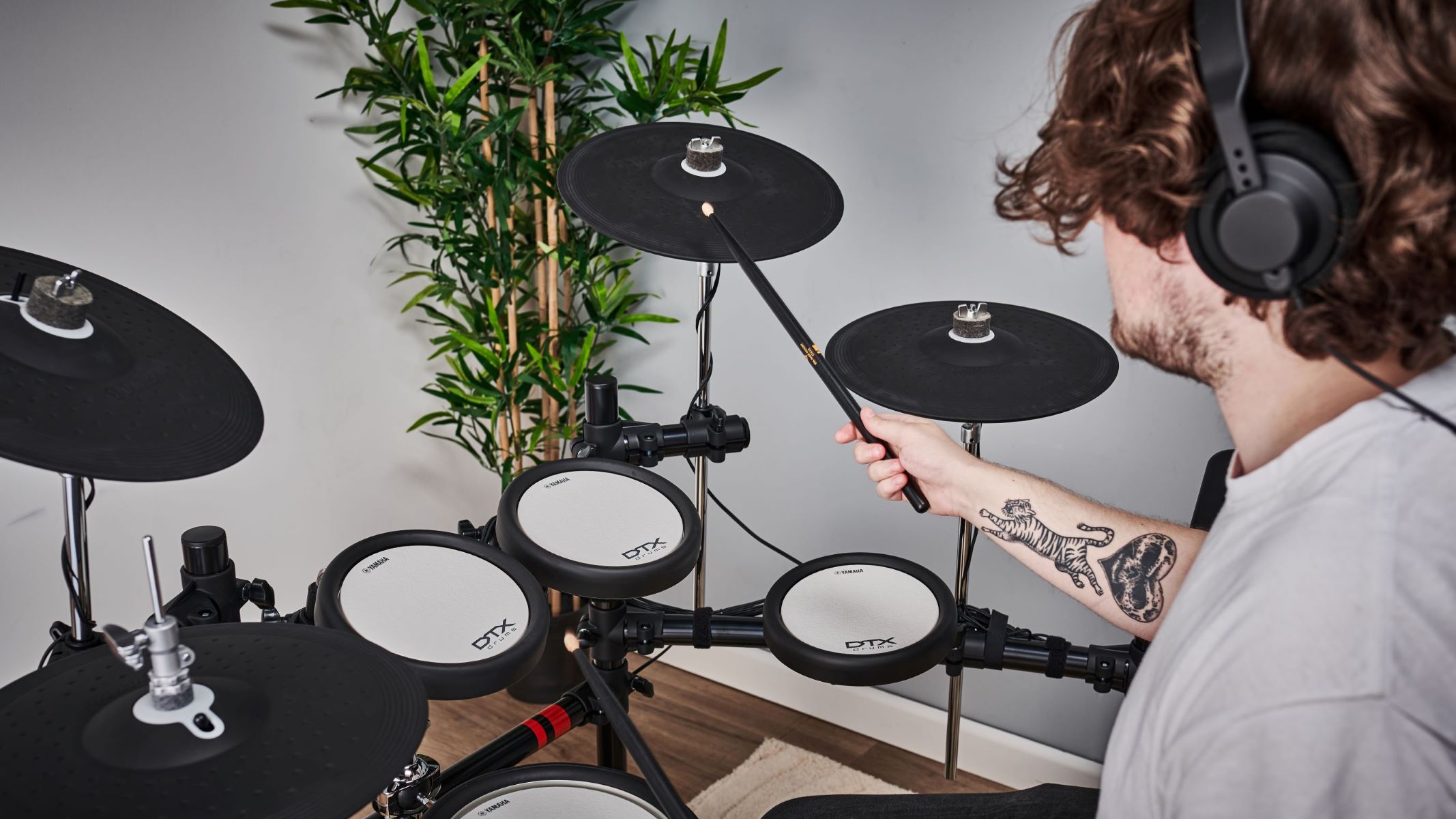

Drums
When Were Electronic Drums Invented
Modified: March 9, 2024
Discover the history of electronic drums and their invention. Learn about the evolution of drums and their impact on modern music. Explore the timeline of electronic drum technology.
(Many of the links in this article redirect to a specific reviewed product. Your purchase of these products through affiliate links helps to generate commission for AudioLover.com, at no extra cost. Learn more)
Table of Contents
Introduction
Introduction
Electronic drums have revolutionized the world of percussion, offering a unique blend of versatility, portability, and innovative sound possibilities. These instruments have come a long way since their inception, shaping the way music is created and performed across various genres. In this article, we will delve into the fascinating history and evolution of electronic drums, exploring their early development, the rise of electronic drum kits, and the modern innovations that continue to push the boundaries of musical expression.
The journey of electronic drums is a testament to human creativity and the relentless pursuit of pushing the boundaries of musical innovation. From humble beginnings to the cutting-edge technologies of today, electronic drums have carved a niche for themselves in the music industry, captivating musicians and audiences alike with their unique capabilities and sonic possibilities.
As we embark on this exploration of electronic drums, we will uncover the pivotal moments, technological advancements, and influential figures that have shaped the evolution of these groundbreaking instruments. Join us as we unravel the captivating story of electronic drums and their profound impact on the world of music.
Early Development of Electronic Drums
The early development of electronic drums can be traced back to the mid-20th century, a time marked by significant advancements in technology and a growing desire to expand the sonic possibilities of traditional percussion instruments. One of the pioneering figures in this domain was Graeme Edge, the drummer of the iconic rock band The Moody Blues. In the late 1960s, Edge collaborated with Sussex University professor Brian Groves to create the “Electronic Sound Machine,” a primitive electronic drum device that laid the foundation for future innovations.
During the same era, the renowned musician and inventor, Harry Chamberlin, introduced the Chamberlin Rhythmate, a groundbreaking electronic rhythm machine that utilized tape loops to produce various drum and percussion sounds. This invention foreshadowed the emergence of electronic drum technology and inspired a wave of experimentation and innovation in the musical instrument industry.
However, it was not until the 1970s that electronic drums began to gain significant traction. Companies like Ace Tone, Linn Electronics, and Simmons emerged as key players in advancing electronic drum technology, introducing drum modules and pads that paved the way for a new era of percussive expression. These early electronic drum prototypes, though rudimentary by today’s standards, sparked a wave of curiosity and enthusiasm among musicians and technology enthusiasts, setting the stage for further evolution.
One of the pivotal moments in the early development of electronic drums came with the release of the Roland TR-808 Rhythm Composer in 1980. This influential drum machine not only shaped the sound of countless music genres, including hip-hop, electronic, and pop, but also showcased the immense potential of electronic percussion in shaping modern music production.
As the 20th century progressed, electronic drum technology continued to evolve, incorporating digital sampling, MIDI connectivity, and advanced sound synthesis techniques. These advancements laid the groundwork for the emergence of fully integrated electronic drum kits, setting the stage for a revolution in live performance and studio recording.
The early development of electronic drums represents a pivotal chapter in the history of music technology, marking a paradigm shift in the way rhythm and percussion are conceived and executed. The pioneering spirit of inventors, musicians, and engineers during this era laid the groundwork for the remarkable advancements that would follow, shaping the sonic landscape of contemporary music in profound ways.
The Rise of Electronic Drum Kits
Throughout the 1980s, electronic drum kits experienced a surge in popularity and innovation, captivating the imagination of drummers and music producers worldwide. This period marked a transformative phase in the evolution of percussion instruments, as electronic drum kits began to transcend their novelty status and establish themselves as legitimate tools for musical expression.
One of the defining factors in the rise of electronic drum kits was their increasing affordability and accessibility. As technology continued to advance, electronic drum manufacturers introduced more affordable and user-friendly options, making these instruments attainable for a broader range of musicians. This democratization of electronic drum technology fueled their widespread adoption, leading to their integration into diverse musical genres and performance settings.
Simultaneously, electronic drum kits gained traction in the realm of studio recording, offering unparalleled flexibility and control over sound production. Drummers and producers embraced the ability to manipulate and customize drum sounds, opening up a world of creative possibilities in music production. The versatility of electronic drum kits allowed for seamless integration with digital audio workstations (DAWs) and triggered a paradigm shift in the way rhythm tracks were composed and produced.
Another pivotal development in the rise of electronic drum kits was the incorporation of MIDI (Musical Instrument Digital Interface) technology. This innovation enabled electronic drums to communicate with other MIDI-compatible devices, laying the foundation for seamless integration into complex musical setups. Drummers could now trigger a vast array of electronic sounds and samples, expanding their sonic palette and blurring the lines between acoustic and electronic percussion.
As the 1990s dawned, electronic drum kits continued to evolve, incorporating more realistic and expressive playing surfaces, enhanced sound libraries, and intuitive control interfaces. These advancements not only appealed to electronic music producers and enthusiasts but also garnered attention from traditional drummers seeking new avenues for sonic exploration and performance.
By the turn of the millennium, electronic drum kits had firmly established themselves as indispensable tools for musicians across genres, from pop and rock to jazz and experimental music. Their ability to adapt to diverse musical contexts, deliver consistent sound quality in live settings, and offer unparalleled creative potential cemented their status as essential components of the modern musical landscape.
The rise of electronic drum kits represents a transformative period in the history of percussion instruments, signaling a shift towards a more expansive and dynamic approach to rhythm and sound production. The fusion of technological innovation and musical creativity during this era laid the groundwork for the continued evolution and integration of electronic drums into the fabric of contemporary music.
Modern Innovations in Electronic Drums
The realm of electronic drums has witnessed a continuous stream of innovations, propelling these instruments into the forefront of musical creativity and performance. In the contemporary landscape, electronic drum technology has reached unprecedented levels of sophistication, offering a diverse array of features that cater to the evolving needs of musicians, producers, and live performers.
One of the most significant modern innovations in electronic drums is the integration of advanced sensor technology and responsive playing surfaces. Drum manufacturers have invested heavily in developing highly sensitive and dynamic drum pads and cymbal triggers that closely replicate the feel and response of acoustic drums. This heightened level of realism has bridged the gap between electronic and acoustic percussion, providing drummers with an immersive playing experience and nuanced expressiveness.
Furthermore, the incorporation of multi-layered sound libraries and extensive sample libraries has empowered drummers and producers to access an expansive range of high-fidelity drum and percussion sounds. From authentic acoustic drum kits to cutting-edge electronic textures, modern electronic drum modules offer an unparalleled sonic palette, enabling musicians to craft diverse and immersive soundscapes with ease.
Another groundbreaking innovation in electronic drums is the seamless integration of wireless connectivity and mobile device compatibility. Drum modules and controllers are now equipped with wireless connectivity options, allowing for effortless communication with smartphones, tablets, and computers. This integration facilitates streamlined sound management, performance customization, and real-time control, empowering musicians to harness the full potential of their electronic drum setups with unprecedented convenience.
Moreover, the advent of advanced sound synthesis and digital signal processing technologies has expanded the sonic horizons of electronic drums. Drum modules now feature sophisticated sound-shaping capabilities, including customizable effects, modulation parameters, and dynamic processing tools. This level of sonic versatility empowers drummers and producers to sculpt and tailor their drum sounds with precision, adding depth and character to their musical compositions.
Additionally, the evolution of electronic drum kits has led to the development of compact and portable setups designed for the demands of modern live performance. These streamlined configurations offer a balance of versatility and mobility, allowing drummers to deliver powerful and expressive performances in diverse musical contexts, from intimate venues to large-scale stages.
As electronic drum technology continues to advance, the integration of artificial intelligence (AI) and machine learning capabilities holds immense potential for shaping the future of electronic percussion. AI-driven features such as adaptive playing assistance, predictive sound triggering, and intuitive performance analysis are poised to redefine the possibilities of electronic drumming, enhancing musical creativity and pushing the boundaries of expressive drum performance.
The modern innovations in electronic drums represent a convergence of cutting-edge technology and artistic ingenuity, empowering musicians to explore new sonic frontiers and redefine the possibilities of rhythm and percussion. With a relentless focus on user experience, sonic diversity, and performance versatility, electronic drums stand at the vanguard of musical innovation, inspiring a new era of creative expression and musical exploration.
Conclusion
The evolution of electronic drums stands as a testament to the boundless creativity and relentless innovation that define the world of music technology. From their humble beginnings as experimental prototypes to their current status as indispensable tools for musicians and producers, electronic drums have continuously pushed the boundaries of sonic expression and performance possibilities.
Throughout their journey, electronic drums have not only transformed the way rhythm and percussion are conceived and executed but have also catalyzed a profound shift in the musical landscape. The fusion of advanced sensor technology, extensive sound libraries, wireless connectivity, and compact, portable designs has elevated electronic drums to new heights, offering a level of versatility, expressiveness, and sonic richness that transcends traditional percussion instruments.
As we reflect on the modern innovations in electronic drums, it becomes evident that these instruments have become synonymous with creative freedom, adaptability, and sonic exploration. The seamless integration of cutting-edge technologies, such as artificial intelligence and advanced sound synthesis, has ushered in a new era of musical possibilities, empowering drummers and producers to craft immersive soundscapes and deliver captivating performances with unprecedented control and finesse.
Furthermore, the democratization of electronic drum technology has fostered inclusivity and accessibility, enabling musicians of diverse backgrounds and genres to harness the transformative power of electronic percussion. Whether in the studio, on stage, or in the realm of digital music production, electronic drums have become indispensable tools for realizing artistic visions and pushing the boundaries of musical creativity.
Looking ahead, the future of electronic drums holds promise for even greater innovation and evolution. The convergence of advanced sensor technology, AI-driven capabilities, and seamless integration with digital ecosystems is poised to redefine the possibilities of rhythm and percussion, paving the way for a new era of expressive drum performance and sonic exploration.
In conclusion, the story of electronic drums is a testament to the enduring spirit of human ingenuity and the transformative power of technology in shaping the art of music. As these instruments continue to evolve and inspire, they stand as beacons of innovation, inviting musicians to embark on a limitless journey of sonic discovery and creative expression.


